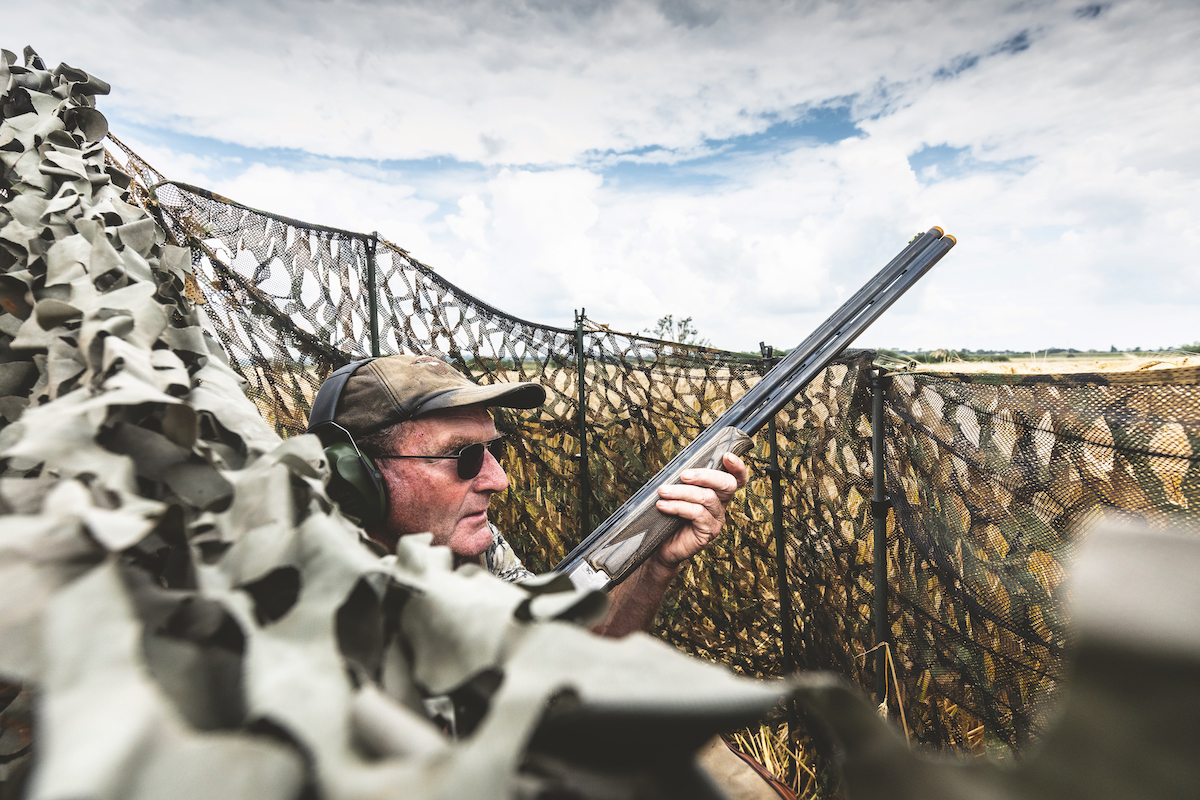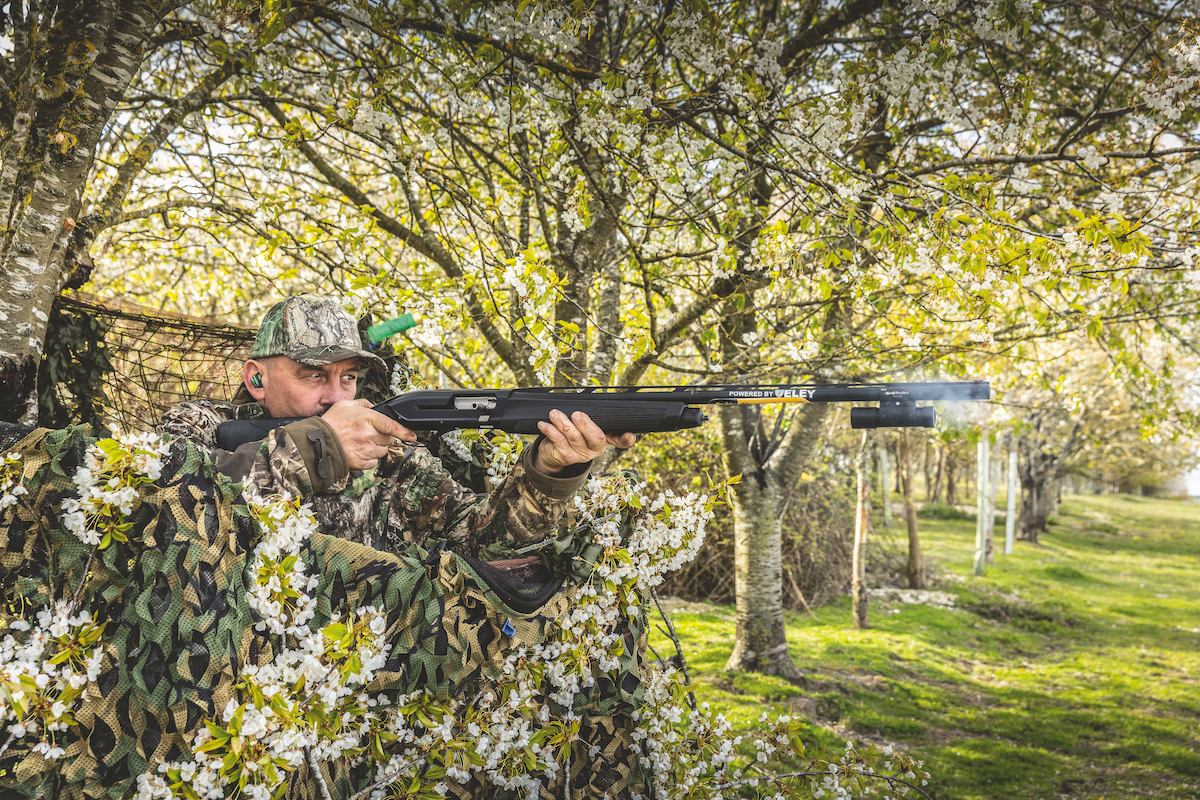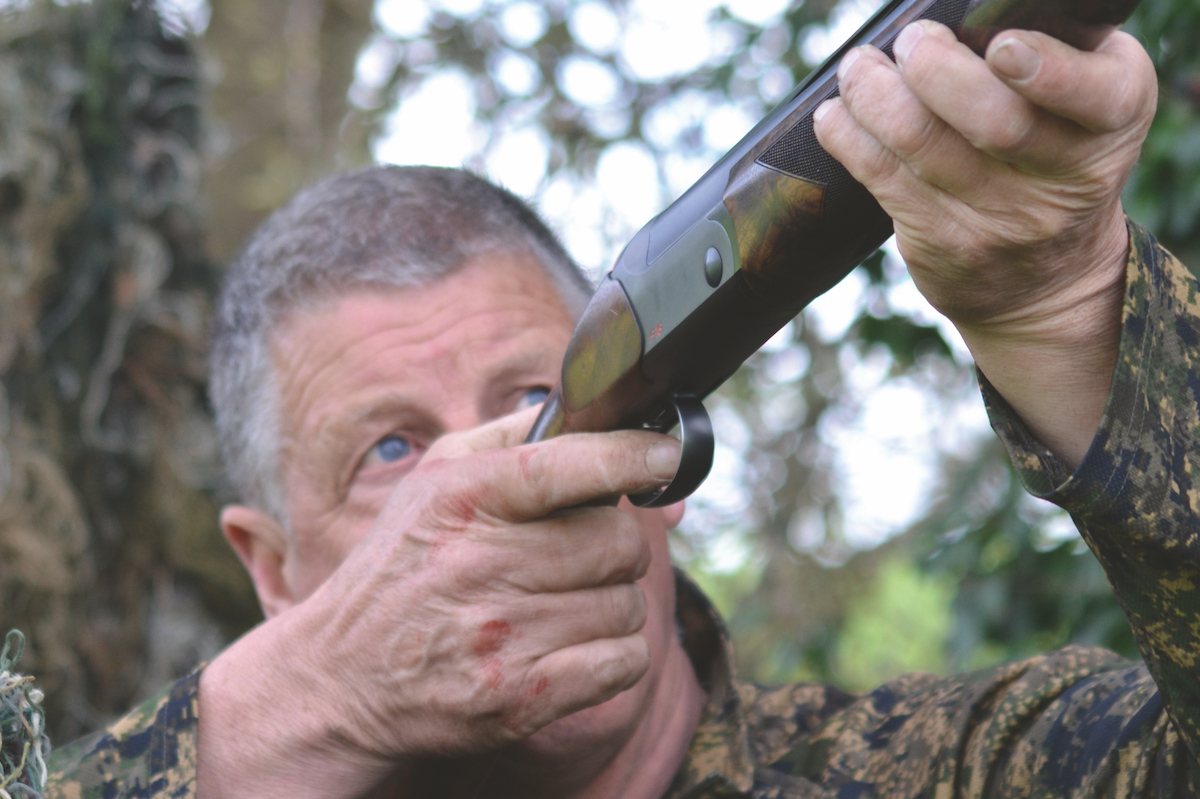Which crops should you shoot over for big bags in late spring?
Once the spring drillings have started to germinate, the pigeon move on. But you can still shoot decent bags on crops such as failed rape, says Tom Payne

For many a pigeon shooter, once the spring drillings have been completed and have started to germinate, and pigeon interest in them disappears, there often follows the slowest period of pigeon shooting.
I am fond of this time of year, however, because it is now that, as a pigeon shooter, you really have to “think like a pigeon”. Opportunities for shooting pigeon will be few and it will almost feel like the birds have vanished in some areas. So the skill it takes to shoot a bag of pigeon when all has gone quiet is a real achievement. Without a doubt, your reconnaissance has to be thought out or you will be in danger of wasting your time.
This time of year is not a poor month for the pigeon — quite the contrary. There is an abundance of food around, but with the birds effectively able to mix and match what they feed on, this makes it tricky to discover and track down their favoured food. The trees are coming into leaf now too, which makes it harder to locate moving birds through the binoculars. Added to this, a pigeon’s feeding habit can swing wildly if the weather becomes changeable, for example if there is heavy rain or a sudden drop in temperature.
Where to look for good shooting
In early May, you may be lucky to have a couple of late drillings going in but normally if the weather has played ball, everything will be drilled and in the ground. As you come into the end of May and early June all pigeon feeding will be on green crops.
With this in mind, here are the crops and situations I recommend focusing on, and the weather and timings you would do well to watch.
Pigeon shooting on failed rape
In April to late May, winter rape will have really advanced and will be in flower. Many pigeon shooters will often ignore it at this stage, but this is an opportunity missed. In many cases, if parts of the crop through the winter and spring months have struggled, they will be continuing to struggle. They may have even failed in certain areas of what looks like, from a distance, a healthy crop. These backward or failed parts offer very limited growth that still makes them attractive to feeding pigeon.
Reconnaissance on failed rape
Late afternoon is the time to be watching these areas. Look closely and you will see birds buzzing in and out of the crop. Their interest will depend on other food sources in the area but it can often offer good shooting.

Setting up a hide on failed oilseed rape crop
Decoys on failed rape
Floaters are effective, giving arriving birds a good vantage from distance.
Try to make the tall crop look busy from above using raised flappers and floaters, as decoys on the crop will be difficult for arriving birds to see.
If birds are keen to feed on a patch of failed rape they will decoy well and will normally only approach in very small groups, pairs or singles.
Tom’s top tip for pigeon shooting on failed rape
Many plants this year have come into flower early. Winter oilseed rape is flowering earlier than normal and pigeon have been showing a huge interest in failed or patchy rape, which is much more prevalent this year, perhaps due to such a wet winter.
I have been shooting good bags on the poorer parts of rape, with birds decoying well. Reconnaissance can be tricky and it can take a while to pinpoint the exact spot of the field they favour, especially if there are a lot of failed areas and/or areas in backward growth, but it is well worth the effort.
Pigeon shooting on clover
Often overlooked by the modern pigeon shooter, clover was the staple diet of the woodpigeon before the introduction of winter rape. It is rare to shoot big bags over clover now, but even so it can still provide very good outings at this time of the year. Birds tend to decoy very well and you can walk away with bags of around 30 to 40.
Reconnaissance on clover
If you drive past any grass fields on a sunny evening and see small gangs of pigeon feeding, it will be clover they are feeding on. It is particularly popular with the birds on a warm, sunny afternoon from about 4pm onwards. Even if you see only a few pigeon feeding, don’t rule out the opportunity to shoot. There is every chance that more pigeon will be coming and going and there could be good numbers in the surrounding woods that you cannot see.
Decoys on clover
I never use a magnet over clover, especially at this time of year, and tend to find that static dead birds in good condition work very well, with a possible flapper added into the mix. At this time of year, birds tend to leave clover if weather has been wet or there has been a sudden drop in temperature.

Pigeon will decoy well on the weeds and volunteer rape found on fallow ground and field margins
Pigeon shooting on field margins and fallow land
Never ignore these pieces of ground; I’ve had some fantastic outings. Some of the pigeon’s favourites grow on these, such as chickweed, charlock, clover and some old volunteer crops. They
can offer a bonanza of food and I have headed off to watch small pieces of ground like this and come back with a very satisfying bag after a couple of hours a surprising number of times.
It does require a certain amount of skill to shoot a bag in this situation, though, because in many cases you will not be dealing with large numbers, so you need to make the most of your chances.
Reconnaissance on field margins and fallow land
The reconnaissance is not easy and it takes time, just watching in the correct conditions — a warm afternoon and no wind or a very light breeze. There is a surprising amount of field margin and small pieces of fallow ground, so it can take time to locate a favourite spot. A good time to start looking is from 3pm onwards. You won’t see many birds but it is surprising what will hang around as the birds come and go.
Decoys on field margins and fallow land
Birds will be relaxed in this type of situation and if the weather is warm they will be in no great panic to feed hard. They will react and decoy very well to static dead birds. Set the birds up as though they are milling around in small groups, feeding on whatever takes their fancy.

Flappers will be easily seen by arriving pigeon
Pigeon shooting on peas
In many areas, peas ceased to be grown but the crop has made a comeback, much to my delight. For the pigeon shooter, peas offer all-round shooting, from drill to harvest. It is important that you don’t overshoot the crop, though. Space your outings correctly and you will be more effective for the farmer. As the crop advances, you don’t want to be a “walking bird” displacing the birds to feed on other parts of the crop.
Reconnaissance on peas
Depending on the weather I would focus my recon around 12 noon onwards. If it is a very still and warm day I would start watching later in the day. Pigeon operate like clockwork on peas so once you have identified where to set up beat the birds to the field.

Adding flappers to a pattern works well over peas, a crop that is making a welcome return
Decoys on peas
Flappers work brilliantly in earlier stages of growth because they stand out, but you can also just use static dead birds. Pigeon won’t be over-picky about where they choose to feed in the field so creating two to three small gangs, with a couple of flappers among them, gives arriving birds great confidence.








